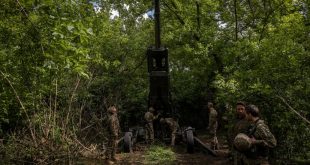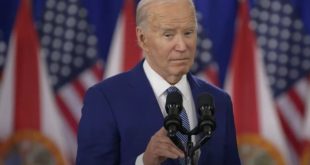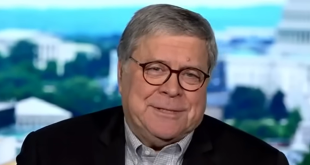WASHINGTON — The Food and Drug Administration authorized both the Moderna and Pfizer-BioNTech coronavirus vaccines for the nation’s youngest children on Friday, a relief to parents who have waited 18 months to protect their babies, toddlers and preschoolers since shots first became available.
Regulators followed the recommendation of independent experts on an advisory panel, who voted unanimously on Wednesday in favor of both vaccines. All Americans other than the roughly 20 million children under 5 have had the option of protecting themselves against Covid-19 for months and are eligible for booster shots.
Moderna’s two-dose vaccine is for children 6 months through 5 years old, while Pfizer’s three-dose vaccine is for children 6 months through 4 years old.
A separate advisory panel to the Centers for Disease Control and Prevention began two days of meetings on the matter on Friday. The F.D.A.’s action permits vaccines to be used, but doctors look to the C.D.C.’s advisory committee for specifics on how to use them, and acceptance of the vaccines will depend partly on the strength of the agency’s recommendations. After the panel votes on Saturday, the C.D.C.’s director, Rochelle P. Walensky, will issue her own recommendation, the final step before distribution.
The Biden administration began shipping the vaccines on Friday. But uptake in the coming weeks could be low.
Both Pfizer’s and Moderna’s studies showed that the Omicron variant of the virus greatly dulled the power of the vaccines to prevent symptomatic infection in young children, just as it did for adults.
Pfizer has said that two doses of its vaccine were only about 28 percent effective in preventing disease, while three doses were 80 percent effective. But that 80 percent estimate was based on only 10 cases in a subset of 1,678 trial participants.
Moderna’s vaccine was about 51 percent effective in children 6 months to 2 years old and 37 percent effective in children 2 through 5.
Like the F.D.A.’s independent panel, the C.D.C.’s advisers had few concerns about side effects from either vaccine. They also stressed the unmet need. The data on Omicron’s effect on young children “should just decimate the myth that this infection is not life-threatening in this age group,” said Dr. Sarah Long, a panelist and an infectious diseases expert at Drexel University College of Medicine.
But they shared the concerns of the F.D.A.’s panel about the effectiveness of Pfizer’s vaccine, and the doses required to achieve it. “In the interest of sort of full transparency to parents, it’s to me appropriate to acknowledge the uncertainty around that,” said Dr. Matthew Daley, a senior investigator at Kaiser Permanente Colorado who leads the C.D.C.’s vaccine working group, referring to Pfizer’s efficacy data.
Both vaccines provoked an immune response comparable to that triggered in young adults, the primary measurement the agency used to measure effectiveness. Asked to compare them at a press briefing, Dr. Peter Marks, who heads the F.D.A.’s vaccine division, said that Moderna’s vaccine might trigger an immune response “slightly more rapidly,” while Pfizer’s might “bring a greater response after the third dose.”
He said parents should feel comfortable with either, and recommended they go with whichever one is available. Dr. Robert M. Califf, the F.D.A. commissioner, said in a statement: “As we have seen with older age groups, we expect that the vaccines for younger children will provide protection from the most severe outcomes of Covid-19, such as hospitalization and death.”
Asked why the F.D.A.’s statement cited efficacy data only for Moderna’s shots, Dr. Marks said the company’s data was “more mature” than Pfizer’s. Another top agency regulator on Wednesday said that Pfizer’s estimate of 80 percent effectiveness for three doses was “imprecise” and could change.
Federal agencies are now studying whether both vaccines need to be updated for all age groups to counter the rapidly evolving virus. The C.D.C.’s panelists spent considerable time on Friday trying to pinpoint how the Omicron variants have altered the risks to children. They noted that parents vaccinate their children for many other diseases with comparable, or even lower, risks of death.
Dr. Marks urged parents not to wait to see if the vaccines are redesigned, saying that the current ones still provide “excellent foundational immunity against a broad range of Covid-19 variants.”
In a statement, President Biden said: “Today is a day of huge relief for parents and families across America.” But early indications suggest there may be a big surplus of doses.
So far, only 2.5 million doses of Pfizer-BioNTech’s vaccine have been ordered, around half of what the federal government offered states, pharmacies and health providers. And about 1.3 million Moderna doses, about a quarter of what was offered, have been claimed.
Distribution could be uneven, depending on how many vaccine doses state officials order and where they send them. Florida was initially the only state to not order its own supply of shots for next week’s rollout, according to White House officials, who said the state reversed its position on Friday. A spokesman for the state’s Republican governor, Ron DeSantis, who has dismissed the need for a vaccine for young children, denied that it was a reversal but reiterated that the state “does not recommend the vaccine be administered to healthy children.”
Cori J. Darr, of Riverside, Mo., said early Friday morning that she would seek the vaccine immediately for her daughter, who will turn 5 in November.
“I was starting to think that she would age into a vaccine before anyone bothered to approve one,” she wrote in an email.
As of early Friday, though, she was having trouble figuring out where to go. She said neither her pediatrician’s office nor her local health department planned to offer the shot, and the vaccine clinic at her local children’s hospital was closed.
Federal officials have said that states typically gradually increase their orders as vaccination campaigns go on. But less than 40 percent of children ages 5 to 11 have received at least one dose of a coronavirus vaccine, a sign that many families, including some whose adult members were eagerly vaccinated, might be hesitant to inoculate their children.
Pfizer’s vaccine regimen for young children is three doses of three micrograms each, or one-tenth of the adult dose The first two doses are administered three weeks apart; the third dose is given at least two months after the second. That means it would take about three months to be fully vaccinated.
Moderna’s vaccine is two doses of 25 micrograms each — one-fourth the adult dosage — spaced four weeks apart. Some parents say they favor the shorter time frame for their children to be considered fully vaccinated.
On the other hand, experts said, some parents, pharmacists and pediatricians might feel more comfortable with Pfizer’s vaccine simply because it has been authorized for children 5 and older for many months.
Until Friday morning, Moderna’s vaccine was restricted to adults. The F.D.A. authorized it for three age groups, from 6 months through 17 years old, simultaneously.
The F.D.A. has said both vaccines might need boosters. That would mean Pfizer-BioNTech’s vaccine would be four doses and Moderna’s would be three.
Dr. Erin Rose Medina, of Spokane, Wash., said she prefers the Moderna vaccine for her 3-year-old son because she thinks it may be more effective. “Another reason to go with Moderna — faster to get to fully vaccinated status,” she wrote in an email, though she added, “If only Pfizer is available we won’t wait for Moderna.”
Some pediatric and vaccine experts have said that it is extremely hard to try to compare the two vaccines.
“I don’t think there is convincing enough data to say one is better than the other,” said Dr. Kristin Moffitt, a physician at Boston Children’s Hospital who has treated young Covid-19 patients. “We all need to acknowledge that to compare the two head-to-head is very tricky, given that they were studied differently.”
Dr. James Conway, a pediatric infectious disease expert at the University of Wisconsin-Madison, said it was hard to pinpoint how much protection either vaccine might provide given that they were tested against a variant that has been superseded. “You’re kind of playing Whac-a-Mole,” he said.
The F.D.A. has faced some criticism for not authorizing Moderna’s vaccines for children under 6 earlier, given the unmet need. According to Moderna, the firm completed its application for all three pediatric age groups on May 9.
But at the press briefing, Dr. Marks insisted that regulators did not delay action on Moderna’s request. Clearing both vaccines for the youngest children, he said, “actually gives people choice.”
Emily Erdos and Patricia Mazzei contributed reporting.
 Top Naija News: Nigerian News, Breaking News Nigeria and World News Top Naija News is a daily news publication in Nigeria, delivering the latest breaking news in Nigeria and around the world.
Top Naija News: Nigerian News, Breaking News Nigeria and World News Top Naija News is a daily news publication in Nigeria, delivering the latest breaking news in Nigeria and around the world.



